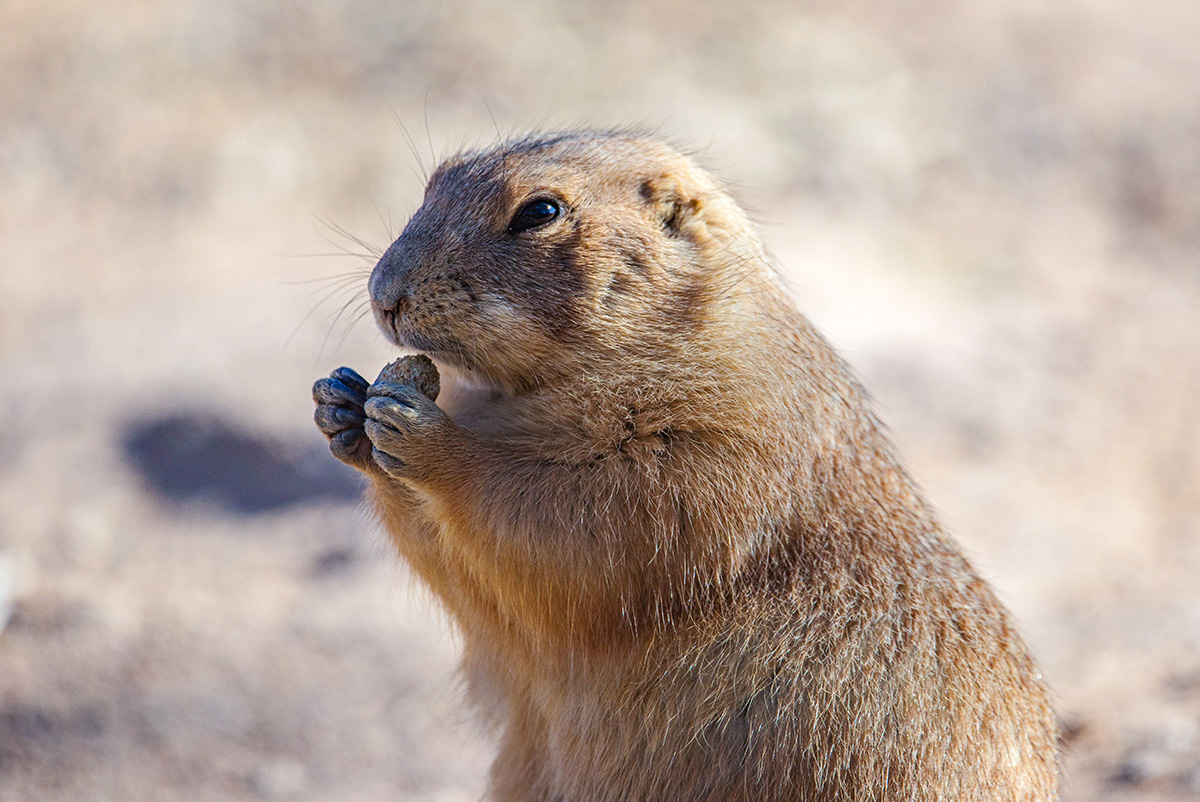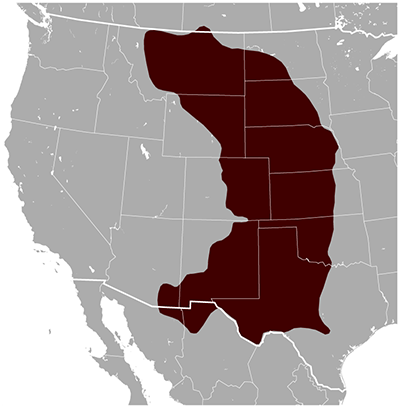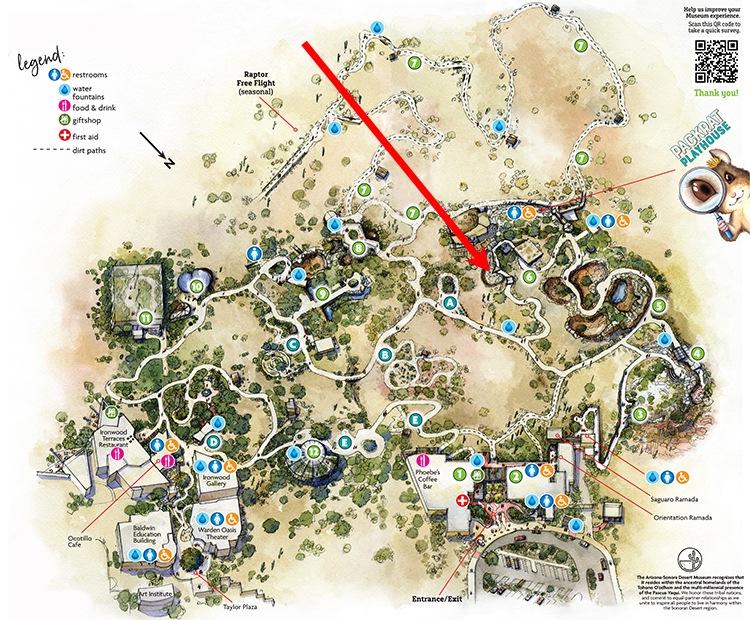Black-tailed Prairie Dog

© Arizona-Sonora Desert Museum
About
Yip, yip—hooray! Prairie dogs are intelligent, social, and chatty creatures that play an important role as a keystone species in their grassland homes. The black-tailed prairie dog is one of five North American species of prairie dogs, and one of two found in Arizona (the other species being the Gunnison’s prairie dog in northern Arizona). Cynomys ludovicianus has a signature black-tipped tail!
Adaptations
These small (1-3 pounds) rodents of the squirrel family use their muscular legs and sharp nails to dig underground burrows where they spend much of their life. These burrows are often called prairie dog towns, with individual family groups called coteries. These burrows include “listening bays” where they can listen for predators, a nest chamber for young, and tunnels to connect different areas. They are diurnal, meaning they are most active during daytime, retreating into their burrows at night. During winter they may sleep for days at a time, though the town is usually active if the weather is mild. Social behaviors include playing, kissing, and grooming, as well as chasing and fighting.
Being in large groups gives them some protection from getting eaten and allows them to share responsibilities like foraging and guard duty. They use a complex combination of sounds to identify predators, defend their territories, and talk about prairie dog life. Alarm barks alert the coterie to danger, and they can even describe the species, color, and size of a potential predator!
Food Web
As primary consumers, they are a vital link in the food web. Most of their diet (70-95%) are grasses, supplemented with other leafy vegetation and the occasional insect. They rarely need to drink water, as their plant-based diet provides most of the moisture they need. Common predators include coyotes, bobcats, foxes, black-footed ferrets, hawks, and badgers. The black-footed ferret is an obligate predator of prairie dogs.
Prairie dogs regularly trim taller vegetation around the town, not just for eating but also to see their predators more easily. This contributes to healthy, nutritious new growth which benefits grazers like pronghorn and bighorn sheep. Black-tailed prairie dogs are considered an umbrella species and keystone species for grasslands. Many animals depend on, or benefit from, the presence of prairie dogs including mountain plovers, burrowing owls, ferruginous hawks, and snakes.

Habitat and Range
Black-tailed prairie dogs inhabit open, arid, short-grass prairies throughout the Great Plains region in North America. In the Sonoran Desert region, they are found in southeastern Arizona and northeastern Mexico.

© Liz Kemp / Arizona-Sonora Desert Museum
Family Life
Burrows are constructed in large communities of prairie dogs called towns or colonies, which are subdivided into coteries, the basic family unit. A coterie is typically one male, three to five females, and their young. The breeding season occurs mid-March to mid-April, and each female births a single litter of 2-8 young. In early summer, the little pups begin to explore the world outside of their burrows!
Glossary
- Keystone Species:
- An animal or plant that helps support or define an entire ecosystem. For example, saguaros are a keystone species in parts of the Sonoran Desert.
- Obligate predator:
- A predator that specializes in one primary prey species.
- Umbrella species:
- Conservationists often focus on a single species to protect multiple species. An “umbrella species” is a species whose protection also benefits other species in their ecosystem.
Fun Facts
- Prairie dogs have regional dialects and a big vocabulary, possibly larger than any other animal besides humans.
- Black-tailed prairie dogs have at least 11 distinct calls in addition to a variety of body language postures and displays. Scientists don’t fully understand the meaning of the “jump-yip” — but we know it’s cute.
- Burrowing owls, cottontail rabbits, and snakes are known to move into empty prairie dog burrows.
- Their digging and burrowing activities aerate the soil, so that air, water, and nutrients can cycle in more easily.
- The largest reported prairie dog town was found in Texas in the 1800s, with hundreds of millions of individuals covering 25,000 square miles (almost 65,000 square kilometers). That’s more like a metropolis! However, most towns are under one square mile.
Conservation
The IUCN Red List of Threatened Species currently labels the black-tailed prairie dog as a species of Least Concern. However, their populations are only around 1-2% of what they once were. This has inspired efforts to reintroduce these charismatic ground squirrels throughout their former range, and they are now fully protected in the state of Arizona.
At The Museum

Check back periodically to see if the prairie dog exhibit in the Desert Grasslands has any occupants.
